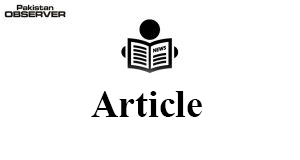Muneer Ahmed Mirjat
TEACHING and learning during covid-19 require motivation and passion for self-paced learning. As students are connected through virtual means during lectures and other interactions, therefore, faculty members are required to develop lecture content that not only delivers the key concepts of the domain but invites them to explore subject-specific themes and relevant applications on their own. Here are some strategies for the interactive lecture.
First, the faculty members are expected to interact with students at the start of the lecture by asking simple questions relevant to the previous lecture for refreshing the topic under discussion as well as to determine the stability of internet connection. To engage all students in teaching and learning activities, faculty members may assign duties of a class moderator on a turn basis to each student. The responsibilities of a class moderator will be to connect all students 5 minutes before the lecture and update faculty members about attendance and any other issues.
This will compel students to join sessions with regularity as their peer is monitoring them during and after the lecture in the form of checking whether students have performed their assigned tasks or not. The moderator may also keep an eye on the student chat during the online lecture and inform faculty members about any action required on the chat if he missed that.
Second, as students can only see slides during lectures, therefore, faculty members may ask the students’ input on the topic under discussion after completing each concept or topic. There is a chance that students may avoid discussion and remain passive during the session; this approach will encourage them to make their point during the online lecture. Participation by one or two students will break the ice and other students will be motivated to participate in the discussion. There may be some points for discussion and quizzes carried out during the online lecture. In such interactions, there is a possibility that discussion may divert the class from the actual content of the lecture, therefore, faculty member needs to remain focused and avoid such diversions.
Third, online lectures can be useful if some group activity is assigned to the students. They may submit their work in the form of blogs, web quests, research papers, an article for a newspaper or in the shape of an assignment, etc. The group task should be planned properly with the required time which may range from one week to a full semester period, but it is better to give a week or so to search secondary sources and develop a comparative write-up. There is a need to refer to some books for reading and apply those concepts with some situations or scenarios of real life. As during online classes and after classes, most of the students are using computers, tablets or mobiles and continuous use of the computer may damage their eyes and other organs, therefore, group tasks may be given for referring books with a response to be submitted in their handwriting.
Fourth, the course material and other reference material should be made available from day one on the Learning Management System (LMS) along with quizzes, assignments, group tasks, discussion topics, and other related academic activities. Students may be encouraged to review feedback or discussion made by other students. For transparency purposes, they should be asked to limit their feedback within some rubric like uniqueness, organization of ideas, use of examples, clarity in concepts and summarizing the arguments. One can also ask students to limit feedback within some specific words like 250, 500 or 800 words.
Five, the prompt feedback by the faculty member is most important for correcting students’ learning approach. Online learning requires immediate response from a faculty member on LMS where assignments and other activities are taking place. If students are active enough and faculty members are busy in their research-related activities, the student will remain passive and their motivation level will drop which may be at peak due to a new system of interaction i.e. LMS.
Online learning requires both faculty members and students to remain active over LMS during each day. It is the ethical responsibility of both stakeholders to fulfill their responsibilities professionally. The time spent on LMS by students should be reviewed on a regular basis and those who are not active may be encouraged to actively participate. The faculty members must make their presence felt through virtual means through LMS as well as by introducing the WhatsApp group for making announcements or issuing several types of alerts. Students are active on TikTok, therefore, it can be a useful medium for students of visual and other media studies.
—The author is Dy Director at Higher Education Commission, Islamabad.









